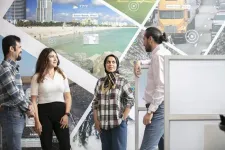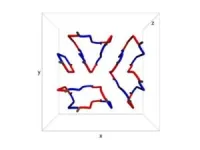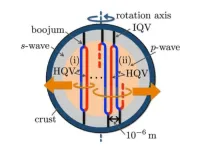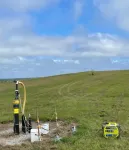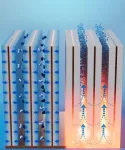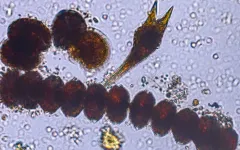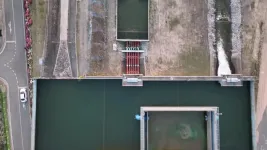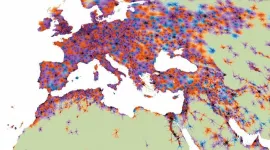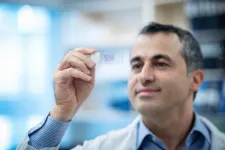However, traditional methods used to assess balance often suffer from subjectivity, are not comprehensive enough and cannot be administered remotely. Moreover, these assessments rely on expensive, specialized equipment which may not be readily accessible in all clinical settings and depend on the clinician’s expertise, which can lead to variability in results. More objective and comprehensive assessment tools in balance evaluation are greatly needed.
Using wearable sensors and advanced machine learning algorithms, researchers from Florida Atlantic University’s College of Engineering and Computer Science have developed a novel approach that addresses a crucial gap in balance assessment and sets a new benchmark in the application of wearable technology and machine learning in health care. The approach is a significant advance in objective balance assessment, especially for remote monitoring in home-based or nursing care settings, potentially transforming balance disorder management.
For the study, researchers used the Modified Clinical Test of Sensory Interaction on Balance (m-CTSIB), widely used in health care to assess a person’s ability to maintain balance under different sensory conditions. Wearable sensors were placed on study participants’ ankle, lumbar (lower back), sternum, wrist and arm.
Researchers collected comprehensive motion data from the participants under four different sensory conditions of m-CTSIB: balance performance with eyes open and closed on a stable surface; and eyes open and closed on a foam surface. Each test condition lasted about 11 seconds without breaks to simulate continuous balance challenges and streamline the assessment process. Researchers used inertial measurement unit (IMU) sensors coupled with a specialized system to evaluate ground truth m-CTSIB balance scores for their analysis.
The data was then preprocessed and an extensive array of features was extracted for analysis. To estimate the m-CTSIB scores, researchers applied Multiple Linear Regression, Support Vector Regression and XGBOOST algorithms. The wearable sensor data served as the input for their machine-learning models, and the corresponding m-CTSIB scores from Falltrak II, one of the leading tools in fall prevention, acted as the ground truth labels for model training and validation. Multiple machine-learning models were then developed to estimate m-CTSIB scores from the wearable sensor data. Researchers also explored the most effective sensor placements to optimize balance analysis.
Results of the study, published in the journal Frontiers in Digital Health, underscore this approach’s high accuracy and strong correlation with ground truth balance scores, suggesting the method is effective and reliable in estimating balance. Data from lumbar and dominant ankle sensors demonstrated the highest performance in balance score estimation, highlighting the importance of strategic sensor placement for capturing relevant balance adjustments and movements.
“Wearable sensors offer a practical and cost-effective solution for capturing detailed movement data, which is essential for balance analysis,” said Behnaz Ghoraani, Ph.D., senior author, an associate professor, FAU Department of Electrical Engineering and Computer Science, co-director of the FAU Center for SMART Health, and a fellow, FAU Institute for Sensing and Embedded Network Systems Engineering (I-SENSE). “Positioned on areas like the lower back and lower limbs, these sensors provide insights into 3D movement dynamics, essential for applications such as fall risk assessment in diverse populations. Coupled with the evolution of machine learning, these sensor-derived datasets transform into objective, quantifiable balance metrics, using an array of machine learning techniques.”
Results provide important insights into the significance of specific movements, feature selection and sensor placement in estimating balance. Notably, the XGBOOST model, utilizing the lumbar sensor data, achieved outstanding results in both cross-validation methods and demonstrated a high correlation and a low mean absolute error, indicating consistent performance.
“Findings from this important research suggest that this novel method has the potential to revolutionize balance assessment practices, especially in situations where traditional methods are impractical or inaccessible,” said Stella Batalama, Ph.D., dean, FAU College of Engineering and Computer Science. “This approach is more accessible, cost-effective and capable of remote administration, which could have significant implications for health care, rehabilitation, sports science or other fields where balance assessment is important.”
The objectives of this study emerged from recognizing the need for advanced tools to capture the nuanced effects of different sensory inputs on balance.
“Traditional balance assessments often lack the granularity to dissect these influences comprehensively, leading to a gap in our understanding and management of balance impairments,” said Ghoraani. “Moreover, wearables support remote monitoring, enabling health care professionals to evaluate patients’ balance remotely, which is particularly useful in diverse health care scenarios.”
Study co-authors are Marjan Nassajpour, a Ph.D. student and research assistant; Mustafa Shuqair, a Ph.D. student; both within the FAU Department of Electrical Engineering and Computer Science; Amie Rosenfeld, Magdalena Tolea, Ph.D., and James E. Galvin, M.D., professor of neurology, chief, Division of Cognitive Neurology, and director of the Comprehensive Center for Brain Health and the Lewy Body Dementia Research Center of Excellence, all with the University of Miami Miller School of Medicine.
This work was supported by Ed and Ethel Moore Alzheimer’s Disease Research Program at the Florida Department of Health and the National Science Foundation.
-FAU-
About FAU’s College of Engineering and Computer Science:
The FAU College of Engineering and Computer Science is internationally recognized for cutting-edge research and education in the areas of computer science and artificial intelligence (AI), computer engineering, electrical engineering, biomedical engineering, civil, environmental and geomatics engineering, mechanical engineering, and ocean engineering. Research conducted by the faculty and their teams expose students to technology innovations that push the current state-of-the art of the disciplines. The College research efforts are supported by the National Science Foundation (NSF), the National Institutes of Health (NIH), the Department of Defense (DOD), the Department of Transportation (DOT), the Department of Education (DOEd), the State of Florida, and industry. The FAU College of Engineering and Computer Science offers degrees with a modern twist that bear specializations in areas of national priority such as AI, cybersecurity, internet-of-things, transportation and supply chain management, and data science. New degree programs include Master of Science in AI (first in Florida), Master of Science and Bachelor in Data Science and Analytics, and the new Professional Master of Science and Ph.D. in computer science for working professionals. For more information about the College, please visit eng.fau.edu.
About Florida Atlantic University:
Florida Atlantic University, established in 1961, officially opened its doors in 1964 as the fifth public university in Florida. Today, the University serves more than 30,000 undergraduate and graduate students across six campuses located along the southeast Florida coast. In recent years, the University has doubled its research expenditures and outpaced its peers in student achievement rates. Through the coexistence of access and excellence, FAU embodies an innovative model where traditional achievement gaps vanish. FAU is designated a Hispanic-serving institution, ranked as a top public university by U.S. News & World Report and a High Research Activity institution by the Carnegie Foundation for the Advancement of Teaching. For more information, visit www.fau.edu.
END
